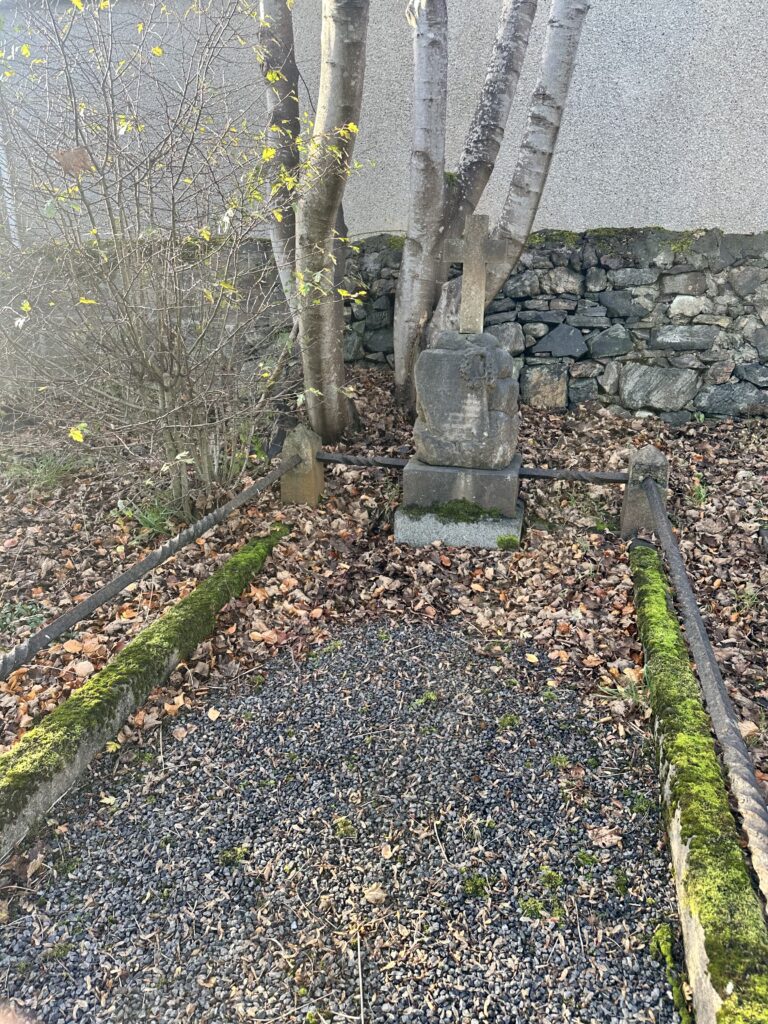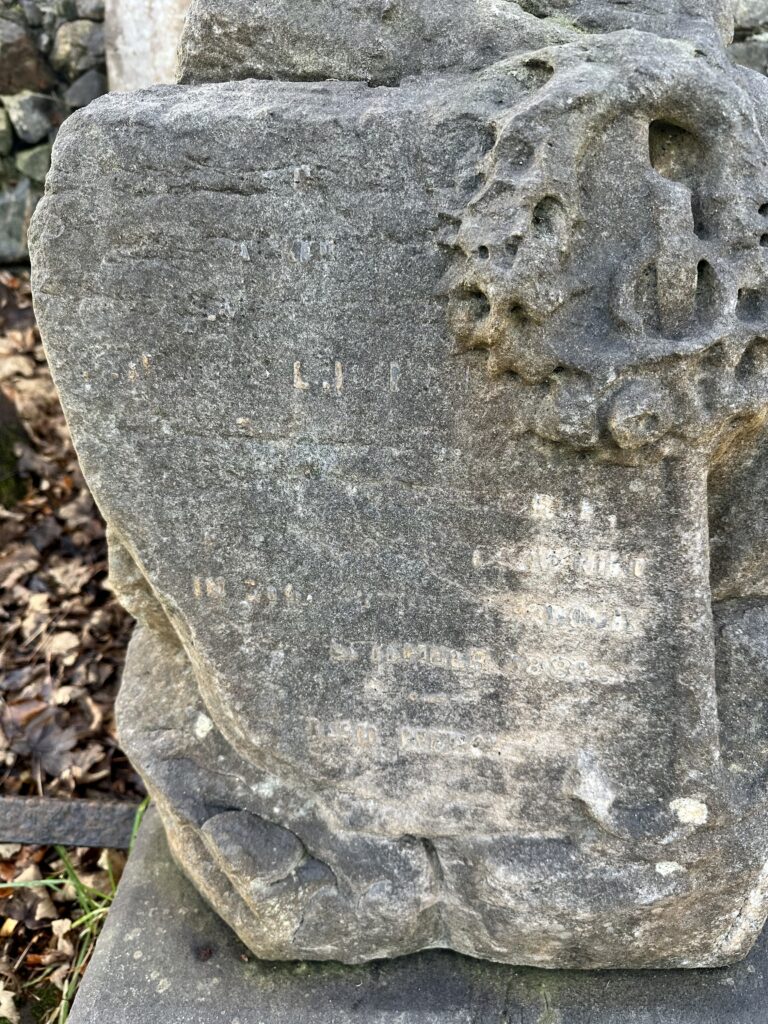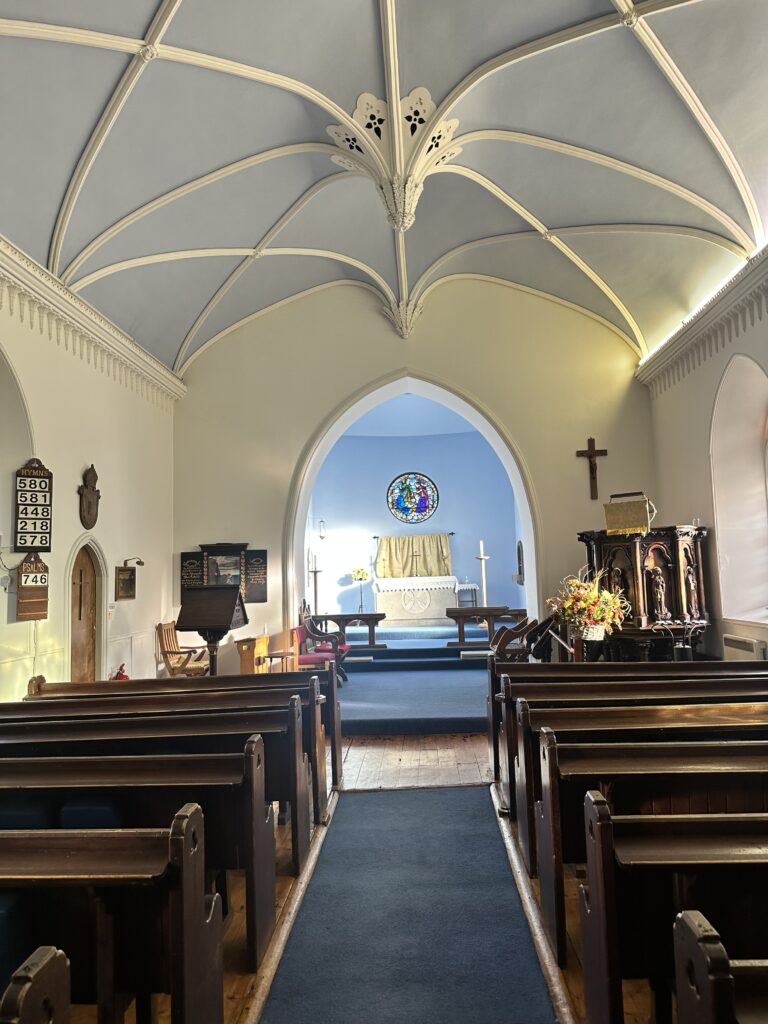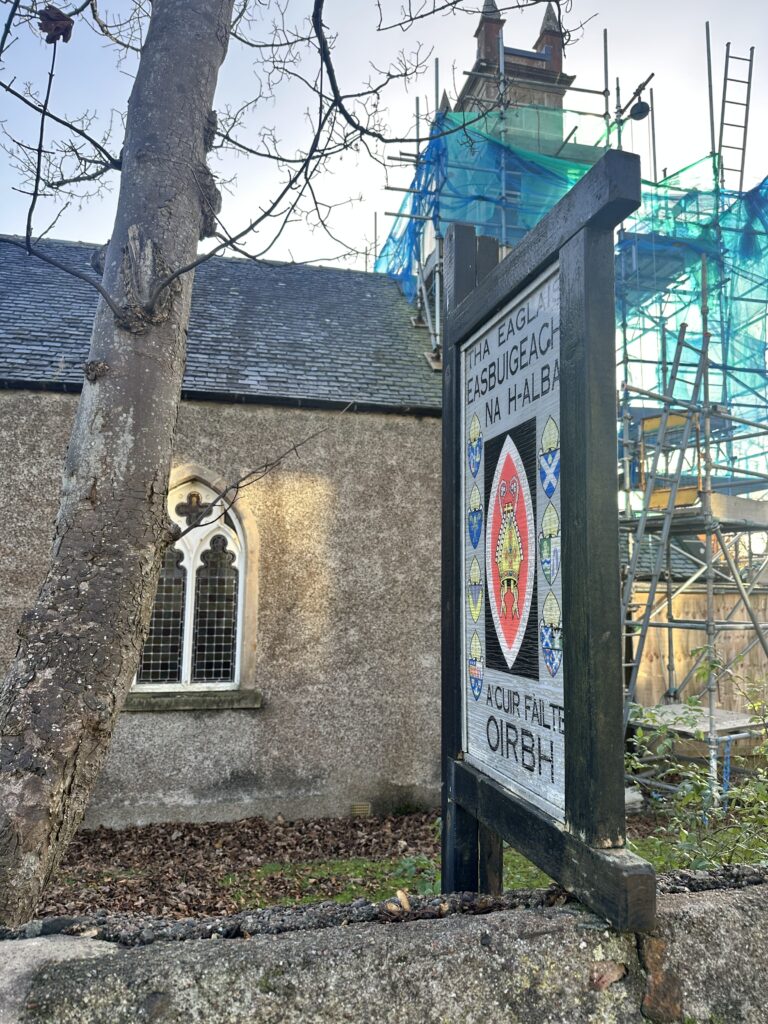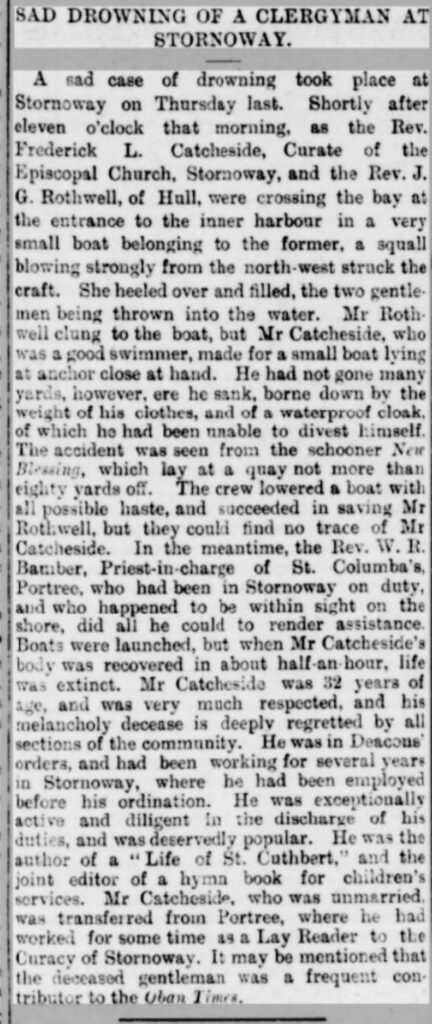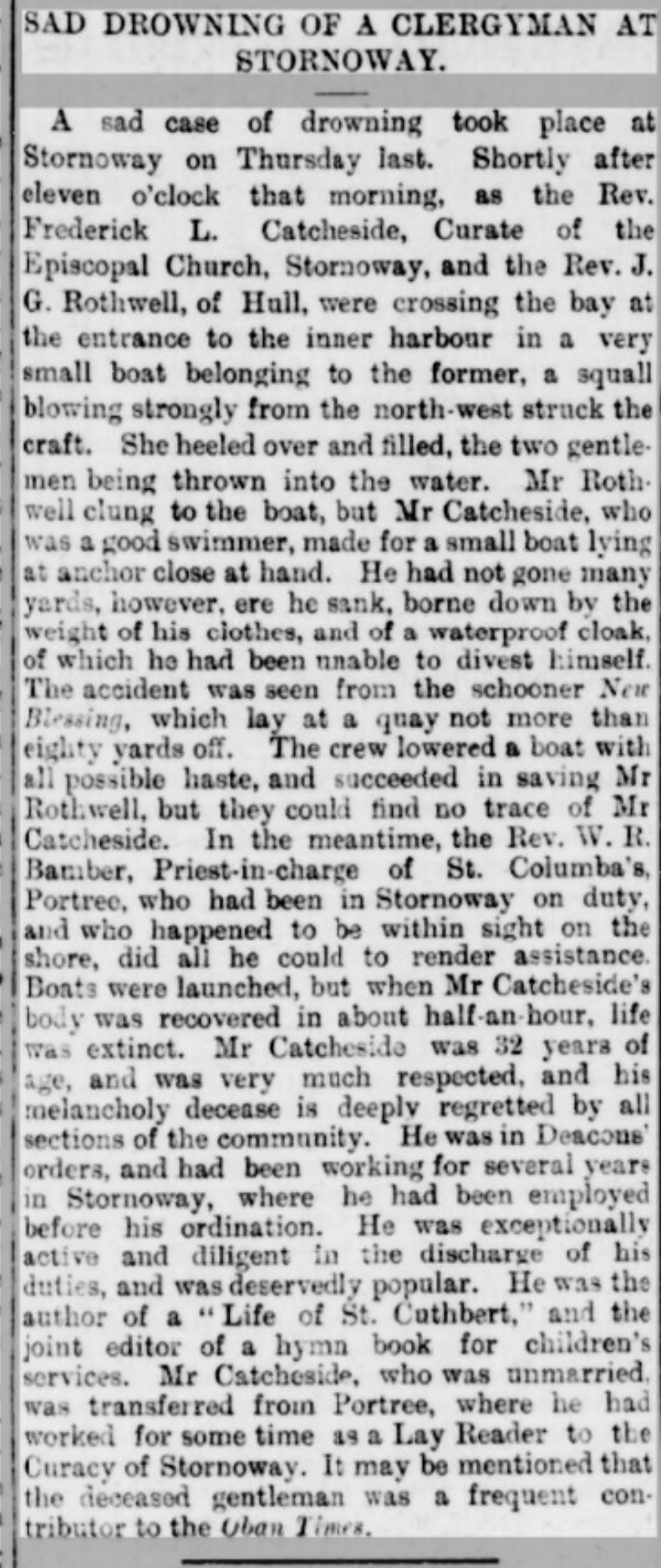By the door of Stornoway’s small Episcopalian chapel St Peter’s, in a grave which has seen better days, lie the remains of Frederick L Catcheside, one of the pioneers of organised shinty in the Hebrides.
Son of M. Catcheside, Riding Farm, Hexham, young Fred became a lay preacher and reader in the Anglican communion who arrived at St Columba’s Episcopal Church in Portree in 1886 around the age of 28/29 from St Cuthbert’s College, Aylesbury where he had been principal since 1879.
He wrote a lot, including a Life of St Cuthbert, and to the Oban Times, but his other passion in life was sport. So much so that when he arrived in Portree he set about organising sporting activities through Portree Athletic Club, including shinty. Fred seems to have been the catalyst for what eventually became Skye Camanachd being established, and shinty becoming more formally organised on the island.
In Martin Macdonald’s seminal Skye Camanachd A Century Remembered the following is recorded “Being of an athletic bent and noticing the lack of recreational facilities for like-minded youngsters he immediately set about providing them — hence the formation of Portree Athletic Club, which seems to have been a multi-sport organisation with sections devoted to football, rugby, lawn tennis and a number of indoor activities for winter evenings. Despite much tut-tutting around the village that a man with church connections (albeit with a church so woefully weak on Calvinistic verities!) should be involved in profane exercises, the club seems to have prospered. And when Mr Catcheside moved to Stornoway in March 1888 he was presented with a purse of sovereigns in the Portree Hotel, and JC Mackay took the opportunity of noting “how much the shinty club was indebted to him, because it was by his influence it was incorporated with the Athletic Club.” This rather suggests that a dormant and inactive shinty team had been given the kiss-of-life by Mr Catcheside’s organisational leadership.”
St Peters was administered from St Columba’s around that time, so Fred must have made connections with Stornoway previously. Macdonald reckons he was behind a controversial football game in 1886, possibly the first inter-island match, at Uig that caused oppobrium in the papers. “The game itself was unexceptional (Portree won 1-0) but it provoked an interesting response. An enraged Edinburgh Highlander wrote to the press complaining about the “degeneracy” of Skyemen and Lewismen playing “this brutal game” to the neglect of “the manly and honest Celtic game” of shinty. “Are there no Highlanders in Skye or the Lews who will resuscitate the real Highland game of shinty?” he asked.”
Macdonald ponders of course that it was distance and not degeneracy that meant that shinty didn’t prosper in Lewis (and of course in the late 19th Century Skye Camanachd certainly faced those challenges as well). However, we know that there was a very active club established in Stornoway in 1893 by Æneas M MacKenzie, literally around the corner from where Mr Catcheside is buried, in what is now the Park Guest House on James Street. The question that arose from reading Martin’s book is this, where then was Fred who would surely have been involved in such an endeavour?
The sad answer was he was no longer alive by that point. His time in Stornoway was tragically cut short. On the 19th September 1889 out on a small boat near Cuddy Point when he and a colleague were hit by a squall. The boat capsized and Fred, being a strong swimmer, decided to swim for a near by boat. He was however encumbered by his clerical dress and boots and the weight of these dragged him down and he was drowned. His body was recovered and he was buried in the grounds of St Peters. “A gloom was cast over Stornoway” according to Dr Donald Macdonald at the death of such an active man at the age of only 32, and the “tragedy was spoken about for many a year afterwards”. The tragedy was widely reported in the UK press at the time, including the report below from the Oban Times.
In Tales and Traditions of the Lews, “Doctor Dolly” talks of the gravestone being white marble but it certainly isn’t like that now. Lying beside Frederick L Catcheside is Canon Anderson Meaden who became a cherished clergyman by his congregation and in other parts of the community, despite the Episcopalians sometimes being treated with suspicion and being called “The Sagart’s Kirk”.
It was evident that wherever he went, Fred inspired a great deal of affection but that the care of the stone, perhaps due to him being unmarried and his family being in Northumbria, it fell into neglect. However, his legacy lives on in Skye Camanachd and it’s tantalising to think what effect he might have had on shinty in Lewis if he’d lived to see Stornoway Shinty Club established. Perhaps it might not have been another century or more until the island had a club that competed on the mainland.
The shinty bonds between Skye and Lewis have over last thirty years been strong and supportive, due to proximity, culture and language. Hopefully putting together this story about the resting place of one of its founding fathers will help further strengthen that bond, and perhaps something could be done to help mark better the life of Frederick L Catcheside and his contribution to sport in the Hebrides. His life also reminds us of the role that those who are new to our communities can have in helping Gaelic and shinty to survive and flourish.
Thanks to the members of St Peter’s Stornoway Episcopal for helping fill in a few gaps and identifying the gravestone.
